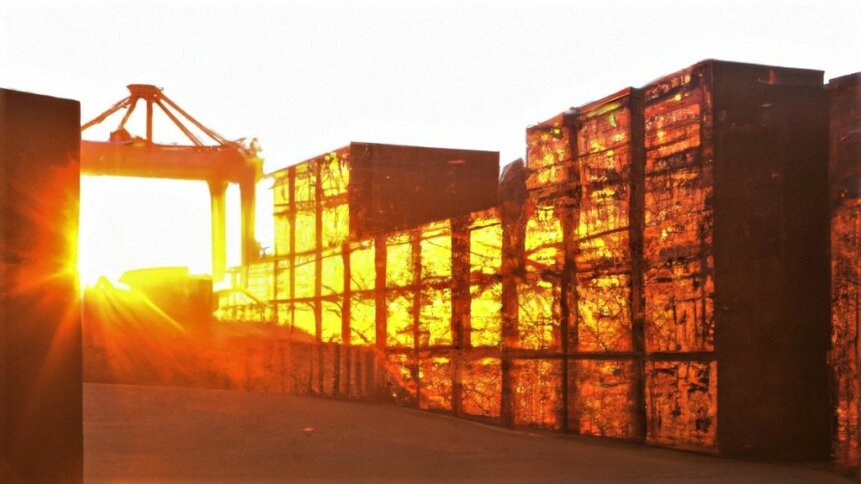Blockchain for supply chain on the agenda in Paris

|
Getting your Trinity Audio player ready...
|
Some may argue – for example, based on the climb in the price of Bitcoin over the past few weeks – that cryptocurrency is making a comeback. But even the biggest fans of blockchain’s financial applications will accept that cryptocurrency’s woes, which became global news with the meltdown of cryptocurrency exchange FTX, still threaten to tame the appetite for digital ledgers. However, that may be taking too narrower a view. There’s more to blockchain than just disrupting financial markets. Industrial use cases such as blockchain for supply chain could side-step problems that businesses face every day.
Annual events such as Paris Blockchain Week – which was sold out in 2022, and organizers (the well-named ‘Chain of Events’) expect tickets for this year’s mix of exhibitions, keynotes, workshops, and networking events to be in high demand – highlight the breadth of activity taking place worldwide. More than 10,000 attendees are expected to be at the Paris gathering in 2023 – representing hundreds of companies building solutions based on digital ledgers in some shape or form.
To highlight how blockchain could benefit businesses of all kinds – and keep a level head while doing so – it’s worth focusing on applications further away from the trading floor. A great use case is blockchain for supply chain. In 2022, the Harvard Business Review published an illuminating piece on how Walmart Canada uses blockchain to solve supply chain challenges. And comparing Walmart’s operations before and after points to the positive impact that digital ledgers, which are immutable, can have on preserving a single source of truth throughout complex supply chains.
Building blocks
In Walmart’s case, one of the grocery giant’s roadblocks was invoicing. The paperwork for getting food from A to B is complicated as it can involve multiple stops, large amounts of fuel, temperature data, and hundreds of other signoffs that – according to the HBR write-up – required human reconciliation in 70% of cases. Switching to a blockchain solution, where each invoice line is written to an easily traceable digital ledger, cut the number of discrepancies to a much more manageable 1%. The solution, configured in this case as a private blockchain to protect business data, was built using Hyperledger Fabric – an enterprise-grade, permissioned distributed ledger platform.
Hyperledger Fabric features plug-and-play components such as ‘consensus’, ‘privacy’, and ‘membership services’. A so-called network of networks, the blockchain-enabled platform allows members to carry out transactions and execute peer-to-peer contracts, all without requiring a central authority. The arrangement avoids sharing private data across the entire network, preserving confidentiality. It’s an important feature, as making all information public would likely be a dealbreaker for members in highly competitive industry sectors.
Another Hyperledger user is Global Shipping Business Network (GSBN), which has buy-in from major shipping line and terminal operators, such as COSCO, Hapag-Lloyd, and PSA. In January this year, GSBN celebrated a major milestone with the first bulk cargo electronic Bill of Lading (eBL) issued over the consortium’s blockchain for supply chain solution. Bill of Ladings provide evidence of the transportation of goods and their ownership. And digital transformation from paper to computerized records brings multiple benefits to transport operators. Delays can be avoided through faster document processing, errors reduced, and other features built on top, such as real-time updates.
GSBN’s announcement is particularly notable as it refers to bulk cargo – in other words, oversized goods too large and heavy for containers. These materials typically require a longer transportation cycle and can involve a more complex supply chain, which adds to the test for the new digital ledger technology. In fact, as more sectors join the blockchain, it’s not too far-fetched to imagine traceability from the ground to the finished product in a customer’s hand. Although, there will need to be agreement on systems to iron out compatibility issues. But, in principle, it could work. For example, mining operators are working with digital ledgers too, as Hyperledger’s case studies page highlights.
Cautiously optimistic
Once your eyes open to the possibilities of using blockchain for supply chain and other industrial use cases, it’s difficult not to feel optimistic about future applications. But the wisest developers will be keeping one foot on the ground. The list of keynote speakers for Paris Blockchain week 2022, included Sam Bankman-Fried, founder of FTX. And it may turn out that some firms present at this year’s event in the French capital may run out of steam in 12 months’ time when Paris Blockchain week 2024 comes around. However, big supply chain firms tend to move cautiously. Shipping giant Maersk has only recently streamlined its payments systems – working with fintech partner, Stripe – so that it can accept credit cards and offer more localized point-of-sale experiences.
In tech circles, fast-paced development is often prized (recall Facebook’s internal motto to ‘move fast and break things’). But perhaps, given the rocky path of blockchain technology, companies that end up gaining the most from supply chain and other industrial applications of digital ledgers will be those that are comfortable to take their time.









